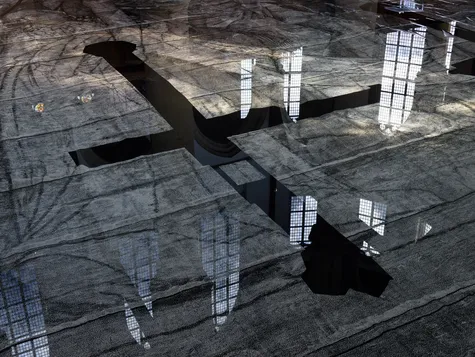Aimée Zito Lema
In Dimension of Absence
Art
Synopsis
Dimension of Absence
Although she didn’t personally experience the last Argentinian military junta (1976-1983), Argentinian-Dutch visual artist Aimée Zito Lema grew up in the shadow of the violent history that affected her country and family. At a young age, she grew fascinated with archival photographs of people who dared to risk their lives by resisting Jorge Videla’s military regime.
On a visit to Buenos Aires, she includes her daughter in a performative art piece in which they embody the past and imagine a new future, showing the way art can function as a medium for memory work across countries and generations.
Credits
- Character
- Aimée Zito Lema
- Director
- Sjors Swierstra
- Country
- Argentina /Netherlands
- Duration
- 15 min
- Year
- 2023
- Blackframe
Aimée Zito Lema is commended for her art around collective memory, adding new layers of meaning to historic events.

Aimée Zito Lema
How does our perception of history shape us? What is remembered, what is forgotten and what is passed on? In her work, visual artist Aimée Zito Lema (1982) investigates the mechanisms of social memory. Through extensive research and the use of archival footage, she asks questions about the relationship between the past and the present. Her art often deals with violence and conflict. She observes, questions, and adds poetic layers to historical facts.
Acclaims
- Solo exhibitions at Mercer Union Toronto (2022) and Calouste Gulbenkian Museum Lisbon (2018)
- Groupexhibitions: Grazer Kunstverein (2021); MACBA, Barcelona (2017); the 11th Gwangju Biennial (2016); and Centre Pompidou, Paris (2016)
- Artist in residence at Rijksakademie van Beeldende Kunsten (2015-2016) and Eye Filmmuseum (2018-2019)


Remembrance, Truth, and Justice.
In Argentina, Aimée Zito Lema made extensive use of the National Archive of Remembrence. This public institution preserves and opens up all kinds of documents related to the human rights violations that took place during the civic-military dictatorship of 1976-1983. This archive was established in 2003 as part of the Remembrance, Truth, and Justice Act.

SCREENINGS
Dimension of Absence has been featured since April 2023 at various (inter)national film festivals and events, including:
- Festival International du Film sur l’Art (FIFA), Montreal, CAN
- Go Short International Short Film Festival, Nijmegen, NL
- Master of Art Film Festival, Bulgaria
- On Art, Warsaw, PL
- St. Louis International Film Festival, St. Louis, US
- The Fine Arts Film Festival, Venice, US
Dimension of Absence won ‘Special Mention’ at On Art, Warsaw, PL and the Impact Award at The Fine Arts Film Festival, Venice, US.
There is also collaboration with cultural institutions and educational organisations:
- Eye Film Player
- FIFA Montreal, platform ARTS.FILM
- Kunstenlab, Deventer, NL
Director

Sjors Swierstra
As a curator and director, Sjors Swierstra (1982) develops projects in the fields of film, photography, and modern art. His documentary The World According to Monsieur Khiar was nominated for a Golden Calf and the Prix Europa. Het Voorval (The Incident) – The myth of Armando was released in cinemas in 2018 and broadcast by NTR.